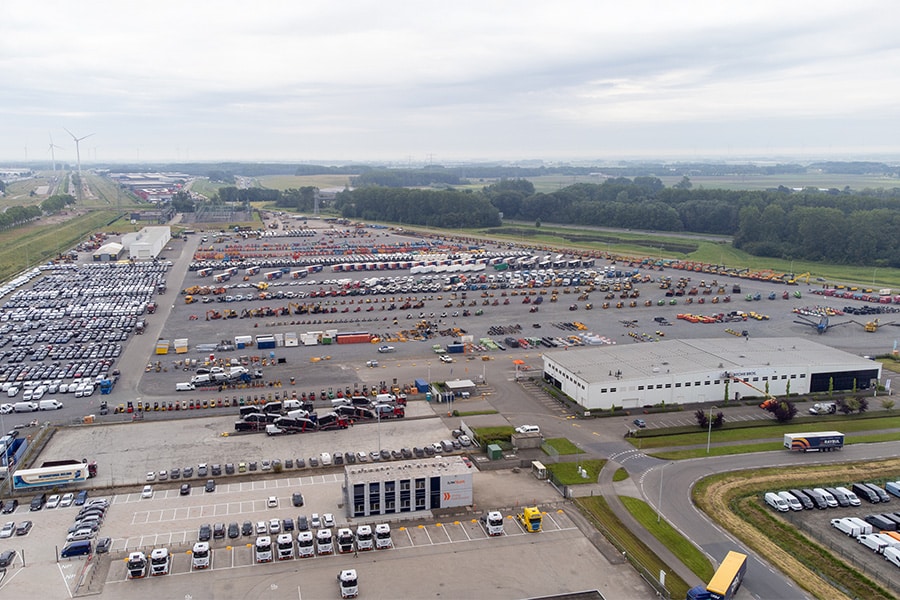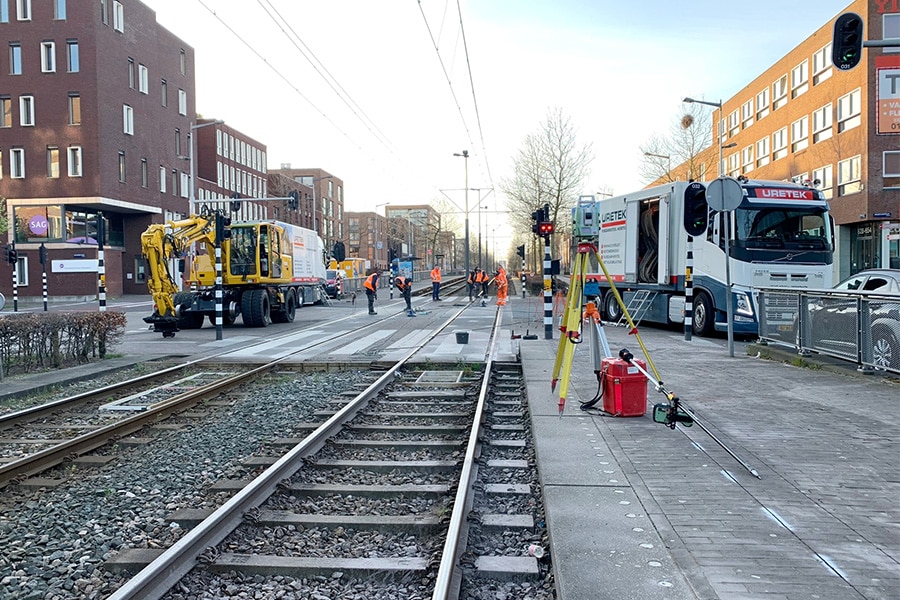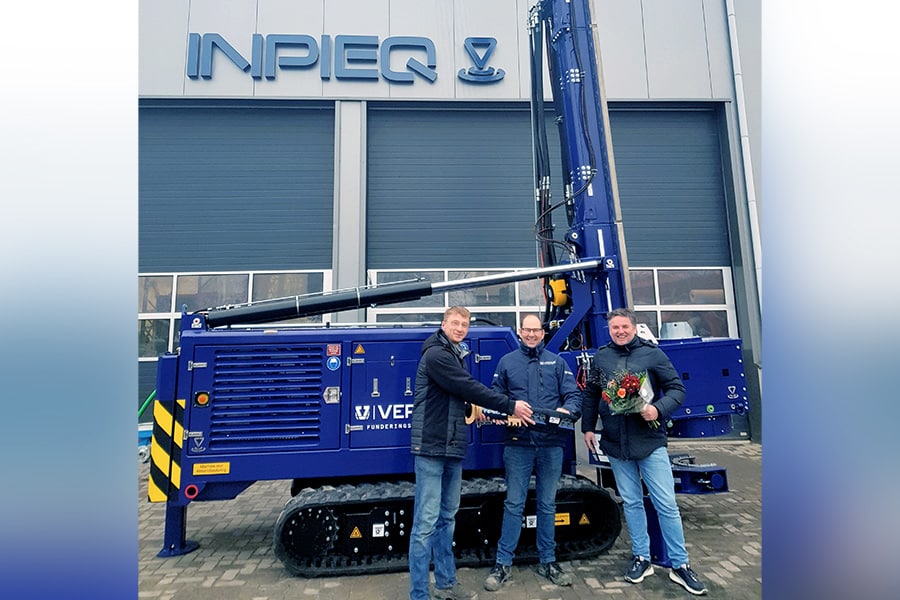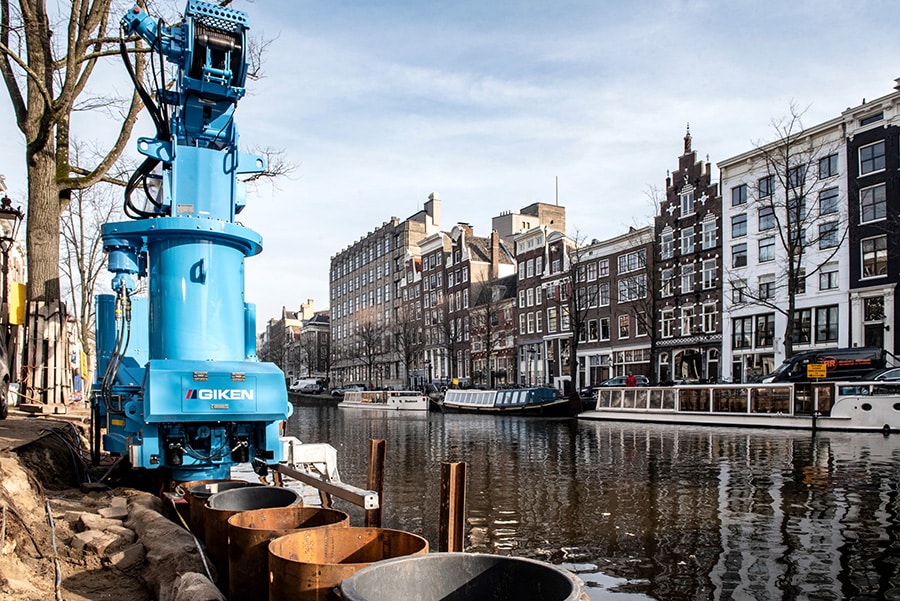
Ede-Wageningen station transforms into modern public transport hub
First civilian milestone a reality
Ede-Wageningen station is undergoing a large-scale metamorphosis. ProRail has contracted contractor combination EdesPoort to renovate the station and station area into a modern public transport hub. An extensive and above all complex project in which many disciplines come together. In early August, a beautiful civil milestone was reached after the successful insertion of the eastern passenger tunnel, with a weight of 8,000 tons absolutely the outer category.
An interview with Peter Vervooren, project manager for the civil part on behalf of Van Hattum and Blankevoort in combination EdesPoort.

Contractor combination EdesPoort consists of VolkerWessels Infrastructure (Van Hattum en Blankevoort and VolkerRail) and Van Wijnen branch Arnhem. Penderman Van Hattum and Blankevoort is responsible for the civil scope, VolkerRail is carrying out the work on the rail infrastructure and Van Wijnen is focusing on the construction of the new station building. In the spring of 2021, the combination started execution. "From the call for tenders, we identified a number of objectives as the basis for the EMVI document. In this, a number of aspects are leading, including maximum aesthetic quality, maximizing the traveler process and optimal environmental satisfaction," Vervooren explains. "Ultimately, we translate that into a specific working method in which we flesh out the performance required from the contract."
Milestone
With the successful insertion of the passenger tunnel, the first civilian milestone is now a fact. "We are quite proud of that," says Vervooren. And we should be, given the complexity and many challenges. The tunnel is 65 meters long, 49 meters wide, 7.5 meters high and puts over 8,000 tons on the scale. "With a broad-based and highly professional team, we finally translated a complex design into a feasible concept. To minimize disruption to the surrounding area, the East Tunnel was built on a pre-construction site adjacent to the track body of the railroad embankment. In addition to the tunnel tube, the points of ascent for the escalators and facilities for the elevators were also included as 'containers' in advance. Lifting this entire colossus and sliding it in under two tracks thus involved the necessary structural considerations. Not to mention designing in a short time and realizing in a limited time."
Challenging time frame
Already in the tender, an availability had been given for a train-free period of 17 days, during which the adjustments to the railroad infrastructure and the insertion of the tunnel could take place, including the placement of the foundation of the canopy structure. "We knew in advance that it would be a challenging timeframe, but we rose to that challenge," states Vervooren. "Ultimately, in the run-up to implementation, the train-free period was extended to 24 days. We made a good product in a safe and timely manner that was slotted into one weekend in early August, with no residual issues. Kudos to all involved who, by the way, followed the retracting process closely with a broad smile." Moving the passenger tunnel 75 meters represented the first, but certainly not the last civilian milestone. "Another tunnel is planned, the West tunnel. We are also working on this from the EMVI philosophy with as little disruption as possible for passengers and the environment. We will soon build the West Tunnel on the nearby Frisopak, a relatively lee area, and will enter the railroad in segments during a train-free period in 2024."
In addition, combination EdesPoort is still building a slow-traffic bridge over the railroad. "Here we chose a composite structure consisting of steel girders with a composite sheathing. It is one of the first times this form has been used at a railroad crossing," says Vervooren. "We are also designing and installing another 600 meters of noise barriers and widening the existing Albert Tunnel to provide space for the new platform. Finally, we are reconfiguring four more squares. Finally, at the beginning of 2024, when the new station building is also ready, we will make the 'turnaround' in one go where the traveler departs from the old station in the morning and disembarks in the new station building in the evening."



